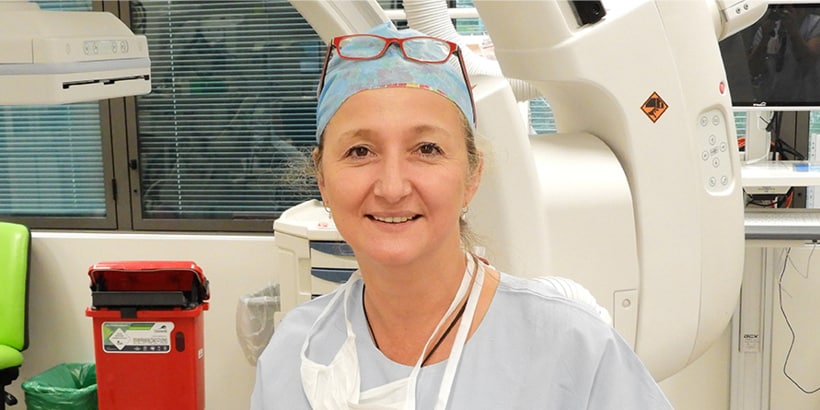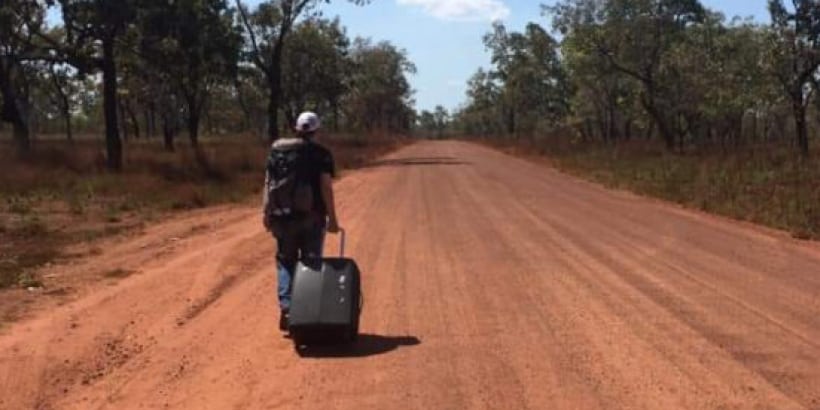
The Lismore experiment
January 19, 2023
Doctor to doctor: we understand
January 19, 2023PROFILE
‘I ran outside. It wasn’t seizure, it was death’: Dr Olivia Magno on her interesting weekend
GP and former world-class cricketer Dr Olivia Magno spent 10 years working in some of Australia’s most remote communities.
OVER THE PAST decade, anyone asking Dr Olivia Magno about her day would be unlikely to hear her utter the word ‘relaxing’.
Take the time she stayed back late in her clinic in West Arnhem Land because she had a “very sick” patient with pneumonia.
“I just couldn’t get his blood pressure up even with fluids, so we did an ECG and troponin. He was infarcting and septic, probably a type 2 because he was just so sick,” she said.
“So we’re trying to support his blood pressure, with a nurse’s help and there’s a guy sitting outside, a young 21-year-old who had just been playing footy, went to the kitchen, got some food and they said he started fitting.
“I ran outside. It wasn’t a seizure. It was death.
“He had hypoxic type of twitches, so I had to jump on his chest and start CPR in the driveway of the clinic and yelled at the nurse to get the defib.
“We shocked him twice in the driveway, then dragged him inside and called more people in and shocked him twice more and he came back, he sat up and said, ‘get the f*** off me’ and we were so relieved, we said ‘ok great’.”
Eventually, CareFlight arrived on the scene, but they were only prepared to take the septic patient.
Dr Magno convinced them to also take the second man when she said she would accompany and look after him, while they could watch the first patient.
She flew back the next day on a charter plane, but when she returned, there was a woman in labour, giving birth to a preterm baby.
“That was an interesting weekend,” she said.
Dr Magno is reflecting on her time working in remote Aboriginal communities across the NT.
She and her partner, Elizabeth Hall, started in the coastal community of Maningrida, 500km east of Darwin in West Arnhem Land, before moving to Milingimbi Island in East Arnhem Land.
Her work then took them to Wurrumiyanga in the Tiwi Islands, followed by Gunbalanya, a town located just east of the sprawling Kakadu National Park.
Dr Magno said they loved it and had embraced the people and various cultures, considering it a “privilege” to see a part of Australia most wouldn’t.
But after 10 years, and concerned about their elderly parents in NSW, the pair decided they were done.
Dr Magno now works as a fly-in fly-out doctor for Borroloola, a NT mining town located 200km from the Queensland border.
She leaves every four weeks, returning back to her home on the NSW far north coast, just south of the Queensland border.
She says it has been much better for her mental health, as she can “cope with working hard and doing lots of overtime” knowing that it allows her to see her family more frequently.
But she said Aboriginal communities fared better when doctors lived where they worked.
“Aboriginal culture is all about learning to trust you, because their health literacy is so different,” she said.
“Especially in places like Maningrida, they don’t trust Western health, it’s all black magic and that sort of stuff.
“Getting them to take medicines to help their diabetes or heart disease is all about trust. If they don’t trust you, they’re not going to take any of the medicines you prescribed.
“It takes a while to build that trust, at least six to 12 months. When you fly-in, fly-out, you never really get to the point where you’re part of the community, you’re just a visitor.”
A former world-class cricketer, Dr Magno became a GP because it gave the flexibility to continue playing cricket at a state and national level — and compete in two indoor cricket world cups.
But doctoring in her NSW town of Tamworth after her cricket career ended didn’t suit her.
“Being a GP five days a week, seeing a patient every 15 minutes just became really draining,” she said.
She describes her first stint in remote general practice, in Maningrida, as both “life-changing” and “eye-opening.” While the population was small, 3000, morbidity levels put it on par with a town with 10,000 people.
“It’s so busy, so many sick people with completely different diseases to what I’d seen before, such as acute rheumatic fever and post-streptococcal glomerulonephritis and melioidosis, all this stuff that you don’t see in Tamworth,” Dr Magno said.
“It was almost a vertical learning curve.”
Dr Magno added that patients would commonly be flown out as many as three or four times a day.
“People get really sick, especially in the wet season. There’d be melioidosis boils, massive cellulitis, heart attacks, snake bites, crocodile bites, box jellyfish stings, or all of the above,” she said.
“On good days, you may not have anyone or just one flown out, but on busy days, I can remember sending out five or six patients on one day, but three or four was not too unusual.”
While the challenges eventually pushed Dr Magno into her new role, she believes rural GPs have it tougher in one regard.
“I work for the NT department, so I’m on a salary. If I was a GP, in a rural community relying on Medicare, oh my god I don’t see how they could actually have a viable business unless they were charging a private fee,” she said.
“Now with GPs resigning or doing other stuff in droves, I think it’ll be easier for us to get people remote, because there’ll be salaries; you don’t have to worry about negotiating with a patient how much they pay you.
“Even when I was in Tamworth, having those conversations was difficult because we want to provide really good value healthcare, but people don’t want to pay for it. “I don’t want to be in that situation, I don’t have to think about money, and I can just see patients and do what I think is best for them.”
Written by Sarah Simpkins and republished with permission from Australian Doctor Group

